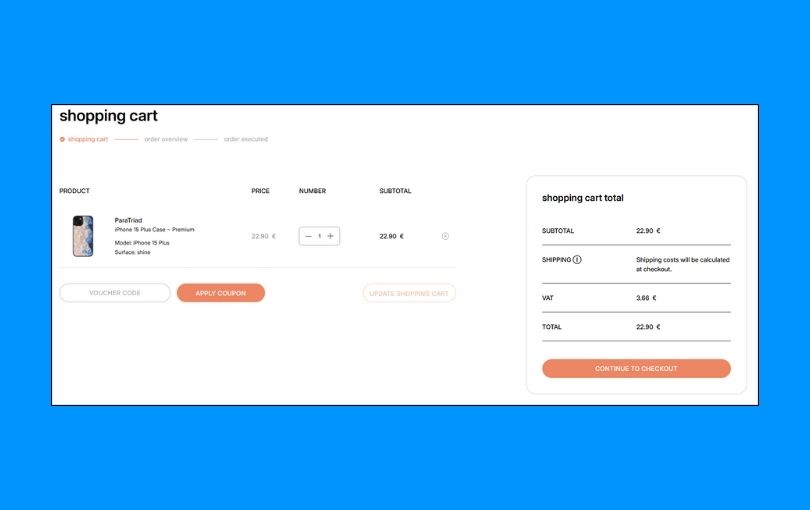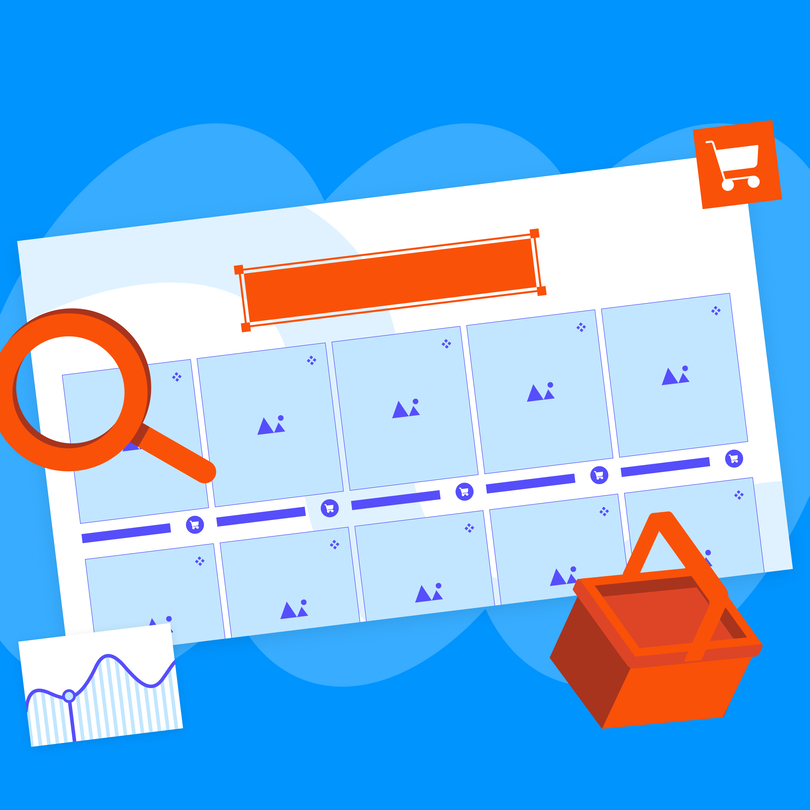It's not easy to drive traffic to your website, but it's even trickier to turn visitors into customers. Even small details, such as a lack of social proof or ineffective search functionality, can lead to a low checkout conversion rate.
You may think you know everything about this metric, but your revenue might tell a different story. Completed purchases directly impact your ecommerce store’s success and viability.
If your checkout conversion rate is poor, it’s time to evaluate the entire process and identify what’s putting your visitors off. This guide will explore the factors influencing this critical stage of the customer journey and how to optimize your checkout rate.
What Is the Average Checkout Conversion Rate?
The average checkout conversion rate for Shopify stores is 45 percent, with mobile averaging 44 percent and desktop 49 percent. Top-performing stores, however, achieve rates exceeding 66 percent overall.
So, what is a good checkout conversion rate? Achieve a rate above 62.6 percent, and your ecommerce store will rank among the top 20 percent.
How Can You Calculate the Checkout Conversion Rate?
Calculate the checkout conversion rate by taking the number of completed purchases and dividing it by the number of visitors who reached the checkout page. Then, multiply the result by 100.
The formula looks like this:
Checkout Conversion Rate = (Completed Purchases ÷ Checkout Page Visitors) × 100
For instance, if 500 visitors reach the checkout page and 200 follow through with a purchase, the rate would be:
(200 ÷ 500) × 100 = 40%
Track these figures using analytics tools that capture user behavior at key points in the shopping journey. Focus on those who start the checkout process, not the broader pool of site visitors.
Do Dynamic Checkout Buttons Increase Conversions?
Yes. According to Shopify, offering various checkout options, such as dynamic buttons for Apple Pay, PayPal, or Google Pay, increases conversion rates by five percent.
Dynamic checkout buttons let customers skip the cart and proceed directly to payment, simplifying the purchasing process. By cutting out extra steps, you eliminate potential reasons for hesitation or second-guessing.
Returning customers also benefit from dynamic buttons, as these allow saved information to autofill during checkout. No one enjoys unnecessary clicks, making this option a convenience that often seals the deal.
The Key Factors Influencing the Final Stage of the Customer Journey
The following elements affect your checkout conversion rate, but our tips will help ensure they work to your advantage.
Unexpected Costs
According to a Statista 2024 survey, unexpected costs were the third most common reason global online shoppers abandoned their carts. Customers dislike discovering high delivery fees, cheaper options elsewhere, or additional charges.
Provide clear and upfront cost breakdowns as an effective way to improve the ecommerce customer experience. Consider also using generative AI to calculate and display total costs to reduce unpleasant surprises for customers.
Complicated Checkout Process
Lengthy forms, unclear steps, and unnecessary data can all nudge 22 percent of customers to change their minds and look elsewhere. Enable autofill options and limit required fields to ensure they don’t find the checkout process frustrating.
Account Creation Requirements
Don’t make the mistake of forcing first-time buyers to create an account, as that puts you at risk of lowering your checkout conversion. Instead of forcing registration, offer incentives for account creation post-purchase, like discounts or order tracking benefits.
Lack of Payment Options
Limited payment methods can alienate shoppers who prefer (or even need) specific tools like Apple Pay or PayPal. To ensure no one is left out, a wide range of payment methods, including local options, digital wallets, Buy Now, Pay Later (BNPL), and cryptocurrencies, should be a priority.
Security Concerns
Based on Statista’s 2022 survey, security and trust issues were the main reasons customers in Germany abandoned carts while shopping. Display trust badges and security certifications (e.g., HTTPS and SSL encryption), and back them up with transparent policies and authentic customer reviews. Without these measures, customers may hesitate to trust your website with their credit card information.
Website Performance Issues
Slow-loading pages, errors, technical glitches, or website crashes frustrate users and harm your checkout conversion rate, resulting in lost sales. You can never go overboard with website performance tests. This data can help you address issues promptly and avoid more complex problems.
Poor Mobile Experience
Smartphones account for 68 percent of online shopping orders and around 77 percent of global retail traffic. If your ecommerce site suffers from poor mobile experience, address this issue by:
- Optimizing checkout design for mobile and keeping the layout clean and uncluttered.
- Enabling guest checkout.
- Offering mobile-friendly payment options, such as Google Pay, Apple Pay, and PayPal.
- Eliminating pop-ups and using a progress indicator to show customers where they are in the checkout process.
- Ensuring fast load times and using a content delivery network (CDN) to ensure fast loading globally.
- Allowing users to go back to previous steps without losing entered information.
- Letting customers save their cart and return later to complete the purchase without starting over.
Lack of Product Information
Vague descriptions or low-quality images can make buyers doubt their choices and your brand’s quality. This is why rich details, high-resolution photos, and videos showcasing your products are imperative. Including FAQs will also increase your credibility and provide all necessary information upfront.
Dissatisfactory or Unclear Return Policy
Eighteen percent of U.S. customers abandoned the carts in 2024 due to dissatisfaction with the brand’s return policy. Simplify your policy by avoiding legal jargon that could confuse customers.
Prioritize clear and straightforward language and provide concise summaries or bullet points at the top of the policy page to highlight key points such as return timeframes, eligible items, and costs. Consider adding an extra benefit by offering features like free returns or prepaid return labels.
Discount Codes Not Working
Customers often finalize purchases because they believe the discount will apply. When it doesn’t, they feel misled or discouraged.
Whether due to technical glitches, time sensitivity, or failure to meet minimum spend requirements, 18 percent of customers will abandon their cart when a discount code doesn’t work. Avoid this by:
- Testing codes before launch.
- Clearly stating any restrictions, such as expiration dates, product exclusions, or minimum purchase requirements, on the product page and checkout.
- Automating discounts when possible.
- Offering a one-time courtesy discount to maintain goodwill if the issue persists.
- Providing real-time feedback when a customer enters a discount code, such as “Code applied successfully” or “Code invalid for this item.”
Now that we’ve explored the challenges, you’re likely wondering how to improve checkout conversion.
How Do You Optimize the Checkout Rate?
The following tips will help you optimize your checkout conversion rates.

1. Polish Your USP
Imagine yourself as a customer and be honest about whether what sets your business apart is obvious. Would that customer easily find one compelling reason to choose you over competitors?
If you have any doubts, review whether the unique product features are clear and if there are enough exclusive offers or unmatched guarantees. This message should appear where it matters—on the product page, in the cart, and during checkout.
Refrain from generic claims like ‘best quality’ or ‘great service.’ Don’t make your customers guess what that actually means and use concrete examples to prove your value. Remember that a well-defined USP doesn’t just attract interest but solidifies a buyer’s decision to follow through.
2. Ensure You’re Tracking the Right KPIs
Track metrics that reflect customer behavior at checkout, such as cart abandonment rates, checkout completion rates, and average order values. Vanity metrics like traffic or clicks won’t provide all the insights you need. However, when combined, these data points should help you identify bottlenecks in the process. For instance, if mobile checkout conversions lag behind desktop, prioritize optimizing the mobile experience.
3. Use Effective CTAs
Appealing CTAs speak directly to the buyer’s intent, which is why common phrases like ‘Click Here’ or ‘Buy Now’ rarely work. Instead, focus on actionable and persuasive language, such as ‘Get Yours Today’ or ‘Secure Your Deal.’
These buttons should be in strategic places and visible, making them easy to click on all devices. Give your CTAs an extra push with contrasting colors and concise wording that will help draw attention.
4. Use Abandoned Basket Retargeting
Reach out to customers who didn’t complete their purchases. Non-intrusive targeted email campaigns or ads should remind them of their selected items and encourage them to return.
If possible, create engaging, personalized reminders instead of generic “Don’t forget your cart” messages. You can also include specific details, like the product’s name or an exclusive discount to incentivize return visits. The key is to use retargeting as a gentle nudge, not a pushy demand.
5. Encourage Easy Returns for Customers Who Were Only Browsing
Did you know that 26 percent of customers abandon their cart because they are just browsing? But this doesn’t mean you can’t get them to change their minds.
For instance, you can provide a “Save for Later” option on the cart page. Allow customers to save items they’re interested in and make it easy for them to return when they’re ready to turn browsing into a purchase. You can follow up with tailored reminders, such as a notification if the item is low in stock or if a price drop occurs. The key is to avoid pressuring them; instead, frame your message as helpful.
6. Boost Sales with Tracking
Leverage order tracking as a tool to build customer loyalty and make shoppers feel at ease about the status of their products. Enable real-time updates on shipping progress and make every step of the way transparent and easy to access.
Include details such as expected delivery dates and current package locations. You can also employ generative AI to improve the tracking experience by personalizing notifications, such as congratulating customers when their order ships or arrives.
7. Fix Payment Hiccups
Nine percent of shoppers abandon their cart because their credit card was declined. Consider sending a discreet email or notification explaining the declined transaction and offering alternative payment methods.
Include secure, user-friendly options such as PayPal, Apple Pay, or installment plans that accommodate different financial situations. Regardless of the reason for the customer’s difficulty, focus on providing solutions and convenience.
8. Seal the Deal with Attractive Incentives
Offers that feel exclusive and time-sensitive can entice customers and create a sense of urgency. Discounts, free shipping, or bonus items for completing their purchase come in handy on this occasion.
The key is to highlight these incentives at the checkout stage, where hesitation peaks. However, don’t overwhelm shoppers with too many choices because a single, well-timed incentive often makes the difference between an abandoned cart and a completed order.
Conclusion
Now that you’ve expanded your ecommerce strategy with tips on how to increase the checkout conversion rate, it’s time to put this knowledge into practice. Re-evaluate this metric and look for red flags that require urgent fixes.
You can always collaborate with professionals who offer ecommerce website development services to streamline your online success. Having an experienced team on your side can help you increase your checkout conversion rate quickly and consistently achieve admirable sales performance.





